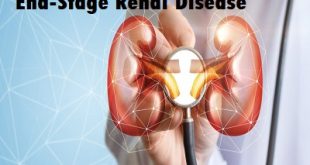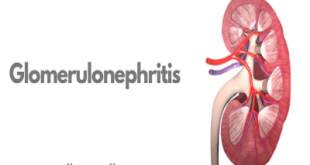What is Multicystic Dysplastic Kidney?
Multicystic dysplastic kidney (MCDK) is a condition in which one or both of a baby’s kidneys do not develop normally while the baby is growing in the womb. Fluid-filled sacs, called cysts, replace normal kidney tissue and prevent the affected kidney from working.
When only one kidney is affected, the unaffected kidney usually grows larger to compensate for the nonworking kidney, and it does the work of both kidneys. The nonworking kidney usually shrinks and disappears over time. The remaining, working kidney is called a solitary or single-functioning kidney. A health care professional may need to evaluate the unaffected kidney to make sure it is working properly.
When only one kidney is affected by MCDK at birth, infants can develop normally and may experience few, if any, health issues. Infants that are born with MCDK in both kidneys may not live very long. Babies that do survive frequently experience renal failure and need dialysis or a kidney transplant. MCDK is distinct from polycystic kidney disease, a condition that results in the development of fluid-filled kidney cysts.
Types of Multicystic Dysplastic Kidney
Multicystic dysplastic kidney (MCDK) can be categorized into two main types based on its presentation and characteristics:
Unilateral MCDK
This is the most common type of MCDK, accounting for about 95% of cases. Unilateral MCDK affects only one kidney, while the other kidney is typically normal. The affected kidney is characterized by multiple cysts of varying sizes, absence or underdevelopment of normal kidney tissue, and abnormal blood vessels. Unilateral MCDK may range in severity, with some cases having minimal impact on kidney function while others may result in a non-functioning kidney.
Bilateral MCDK
Bilateral MCDK is a less common and more severe form of the condition. It affects both kidneys, resulting in the presence of multiple cysts in both organs. Bilateral MCDK is often associated with other anomalies or genetic syndromes, and it typically leads to non-functioning kidneys. This condition can be life-threatening, as it severely impairs kidney function and requires immediate medical attention.
It’s important to note that the distinction between unilateral and bilateral MCDK is crucial because it affects the management and prognosis of the condition. Unilateral MCDK may have a better prognosis, with the unaffected kidney being able to compensate for the non-functioning or partially functioning kidney. In contrast, bilateral MCDK poses more significant challenges, and treatment options may be limited, often requiring dialysis or kidney transplantation for survival.
Epidemiology
Multicystic dysplastic kidney (MCDK) is a relatively common congenital kidney condition, occurring in about 1 in 4,300 live births. It is most often diagnosed prenatally through ultrasound examinations and can manifest as either unilateral (95% of cases) or bilateral involvement (5% of cases). MCDK affects both genders and can occur on either side of the body without a clear preference. It can be associated with other congenital anomalies or genetic syndromes. While most cases are sporadic, there are rare instances of inheritance. The prognosis of MCDK depends on the severity, presence of complications, and the type of MCDK. Unilateral MCDK generally has a better prognosis as the unaffected kidney can compensate, while bilateral MCDK poses more challenges and may require interventions like dialysis or transplantation.
Pathophysiology
The mechanism of multicystic dysplastic kidney is a result of an abnormal induction of metanephric mesenchyme. This could be a result of a formation difficulty of the mesonephric duct. Some mutations in genes associated with renal dysplasia (in syndromes) have been determined. The mutations in question occur at EYA1 or SIX1 genes (branchio-oto-renal syndrome). The PAX2 gene is also thought to play a role in MCDK.
The contralateral kidney often undergoes hypertrophy. This is believed to be a compensatory mechanism to the non-functional MCDK. About 90% of patients with an MCDK will have contralateral hypertrophy into adulthood. The impact of contralateral hypertrophy on long-term renal outcomes is unknown.
Causes of Multicystic Dysplastic Kidney
The exact cause of MCDK is not fully understood, but several factors are believed to contribute to its development. Here are some possible causes:
- Abnormal kidney development: Multicystic dysplastic kidney occurs when the kidneys develop abnormally during fetal development. It is thought to result from a disruption in the early stages of kidney formation, leading to the formation of cysts instead of normal kidney tissue.
- Genetic factors: Certain genetic abnormalities have been associated with MCDK. It can occur sporadically or be inherited in an autosomal dominant or autosomal recessive manner. Mutations or changes in specific genes involved in kidney development may increase the risk of MCDK.
- Vascular problems: Some researchers believe that disruptions in the blood supply to the developing kidneys may contribute to the development of MCDK. Insufficient blood flow to the kidneys during fetal development can lead to abnormal kidney development and the formation of cysts.
- Environmental factors: Exposure to certain environmental factors during pregnancy has been suggested as a possible cause of MCDK, although the evidence is limited. Factors such as maternal drug use, maternal smoking, and certain medications have been hypothesized to play a role in the development of MCDK, but further research is needed to establish a clear link.
It is important to note that in many cases, the exact cause of MCDK cannot be identified. The condition often occurs sporadically without a family history or known risk factors. If you have concerns about MCDK or any other medical condition, it is best to consult with a healthcare professional for a thorough evaluation and diagnosis.
Symptoms of Multicystic Dysplastic Kidney
The symptoms of multicystic dysplastic kidney can vary depending on the severity of the condition, but they often include:
- Abdominal mass: In many cases, MCDK can be detected before birth or shortly after birth as a palpable mass in the abdomen. This mass represents the enlarged and cystic kidney.
- Urinary tract infections (UTIs): Infants with MCDK may experience recurrent urinary tract infections due to the abnormal structure and function of the affected kidney. Symptoms of a UTI can include fever, irritability, discomfort during urination, and foul-smelling or cloudy urine.
- High blood pressure: MCDK can occasionally lead to hypertension (high blood pressure) in affected individuals, although it is more common in older children or adults with the condition.
- Flank pain or discomfort: Some individuals with MCDK may experience intermittent pain or discomfort in the flank area (the sides of the abdomen), particularly if complications such as infection or cyst rupture occur.
- Hematuria: Blood in the urine (hematuria) can occur in some cases, leading to urine that appears pink, red, or brown.
It is important to note that MCDK is typically a unilateral condition, meaning it affects only one kidney. In such cases, the other healthy kidney can usually compensate for the impaired function of the affected kidney, and individuals may lead normal lives without experiencing any symptoms. However, in some rare instances, MCDK can be bilateral, affecting both kidneys, which may result in more severe symptoms and complications.
If you suspect that you or someone you know may have MCDK or are experiencing any concerning symptoms, it is important to consult a healthcare professional for a proper evaluation and diagnosis.
What are the Risk factors of Multicystic Dysplastic Kidney?
The exact causes of multicystic dysplastic kidney (MCDK) are not fully understood. However, there are several factors that can increase the risk of developing this condition. These risk factors include:
- Congenital anomaly: MCDK is typically present at birth and is considered a congenital anomaly. It occurs during fetal development when the kidneys fail to develop normally, leading to the formation of multiple cysts. The exact reasons behind this abnormal development are not well known.
- Family history: There is evidence to suggest that there may be a genetic component to MCDK. Having a family history of the condition or other kidney abnormalities may increase the risk of developing MCDK. However, most cases of MCDK occur sporadically without a family history.
- Gender: MCDK is more commonly seen in males than in females. The reason for this gender predilection is not fully understood.
- Pregnancy-related factors: Certain factors during pregnancy have been associated with an increased risk of MCDK in the baby. These factors include maternal smoking, exposure to certain medications or drugs, and maternal illnesses such as diabetes or urinary tract infections during pregnancy. However, it is important to note that the majority of pregnancies with these factors do not result in MCDK.
It is important to remember that MCDK can also occur in individuals without any known risk factors. If you have concerns about the risk of MCDK or any other kidney-related conditions, Speak with a healthcare professional or genetic counselor who can offer personalized guidance.
Complications
Multicystic dysplastic kidney (MCDK) can lead to various complications, depending on the severity of the condition and whether it affects one or both kidneys. Here are some potential complications associated with MCDK:
- Reduced kidney function: MCDK can affect the normal functioning of the kidneys, leading to a decrease in their overall function.
- High blood pressure: Some people with MCDK may develop high blood pressure, which can have long-term effects on the body.
- Urinary tract infections: MCDK increases the risk of urinary tract infections, which can cause discomfort and require treatment.
- Wilms tumor: Although rare, there is a small risk of developing a kidney tumor called Wilms tumor in the affected kidney.
- Emotional impact: Dealing with MCDK and its associated challenges can have an emotional impact on individuals and their families.
It’s important to work with healthcare professionals to manage and address these complications effectively.
Tests and diagnosis
A multicystic dysplastic kidney is diagnosed with a radiologic evaluation. This evaluation may include a postnatal (after birth) ultrasound along with:
Voiding cystourethrogram (VCUG): A specific x-ray that examines the urinary tract. A catheter (hollow tube) is placed in your child’s urethra (tube that drains urine from her bladder to the outside of her body) and the bladder is filled with a liquid dye. X-ray images will be taken as her bladder fills and empties. The images will show if there is any reverse flow of urine into the ureters and kidneys.
Intravenous polygram (IVP): Another special x-ray of the kidneys, ureters and bladder helps the doctor to see the organs and shows how well the kidneys drain urine.
Renal ultrasound (RUS): A non-invasive test in which a transducer is passed over your child’s kidney produces sound waves that bounce off the kidney and transmits a picture of the organ on a video screen.
Your child’s pediatric urologist determines which of the tests above are most appropriate.
Sagittal transabdominal US image of a fetus during gestation shows several cysts (arrow) in a slightly enlarged kidney
Treatment and management
The treatment for Multicystic dysplastic kidney (MCDK) depends on several factors, including the severity of the condition, the presence of complications, and the overall health of the individual. Here are some common treatment options for MCDK:
Observation
A conservative approach to monitoring the illness may be used in some circumstances, especially if the MCDK only affects one kidney and there are no related problems. To evaluate kidney function and find any potential problems, routine examinations and imaging tests are performed.
Surgical intervention
Surgical intervention might be required if MCDK results in consequences such recurrent urinary tract infections, hypertension, or a big size that affects other organs. Surgery often aims to preserve good kidney tissue while removing the diseased kidney or any non-functioning portions of it.
Nephrectomy
A kidney is surgically removed during a nephrectomy. A partial or full nephrectomy may be advised to remove the damaged kidney or its non-functioning components when MCDK substantially compromises kidney function or leads to serious consequences. Depending on the patient’s unique situation, this operation is often carried either laparoscopically or by open surgery.
Symptom management
Treatment may also involve managing specific symptoms or complications associated with MCDK. For example, medications may be prescribed to control high blood pressure or urinary tract infections. Regular monitoring and follow-up visits with healthcare professionals are important to address any emerging issues.
It is crucial to consult with a healthcare professional to determine the most appropriate treatment plan for MCDK, as it can vary based on individual circumstances. The healthcare team will consider factors such as the age of the individual, overall health, and the specific characteristics of the MCDK to develop a tailored treatment approach.
Prevention of Multicystic Dysplastic Kidney
To help prevent Multicystic dysplastic kidney (MCDK), here are a few simple points to keep in mind:
- Prenatal care: Regular visits to the doctor during pregnancy are important. They can monitor the baby’s development and detect any potential kidney problems early on.
- Avoid harmful substances: Pregnant women should avoid smoking, alcohol, and illegal drugs, as these can harm the baby’s development, including the kidneys.
- Genetic counseling: If there is a family history of kidney problems or MCDK, talking to a genetic counselor can provide information about the risks and help with family planning decisions.
- Healthy lifestyle: Eating a balanced diet, staying active (as advised by the doctor), and managing any existing health conditions can contribute to a healthy pregnancy and potentially reduce the risk of kidney abnormalities.
It’s important to remember that MCDK can still occur even with these preventive measures, as some cases happen spontaneously. Regular prenatal care and open communication with healthcare professionals are essential for ensuring the best care for both the mother and the baby.
 Diseases Treatments Dictionary This is complete solution to read all diseases treatments Which covers Prevention, Causes, Symptoms, Medical Terms, Drugs, Prescription, Natural Remedies with cures and Treatments. Most of the common diseases were listed in names, split with categories.
Diseases Treatments Dictionary This is complete solution to read all diseases treatments Which covers Prevention, Causes, Symptoms, Medical Terms, Drugs, Prescription, Natural Remedies with cures and Treatments. Most of the common diseases were listed in names, split with categories.







